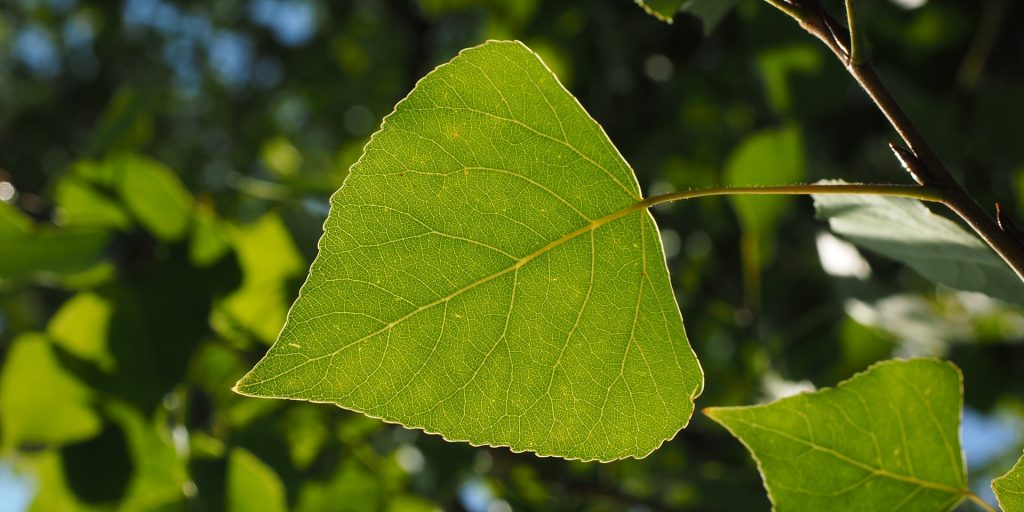Can this new technology make planting trees an affordable way for cities to clean-up contaminated sites?
Cleaning up contaminated sites can get messy for municipalities.
Local governments are constantly struggling with industrial contamination sites and how to appropriately—and affordably—clean up the land. Even when these pollutants fall on private land, the public agencies with oversight still bear the negative effects as that contaminated land could stymie future development for years.
These contamination sites can take on a variety of forms, none of which paint a pretty picture for those responsible for the cleanup. Culprits include gas stations with aging industrial-sized fuel tanks buried underground; dry cleaners and the toxic chemicals used to keep clothes clean on a commercial scale; landfills that leach pollutants into groundwater; and decommissioned industrial facilities.
This is a problem playing out on a massive scale. The Environmental Protection Agency (EPA) has hundreds of thousands of brownfields and “Superfund sites,” many of which impose acute health risks to the public—not to mention the financial hardships incurred by the local communities responsible for cleaning them up. Despite the health risks to nearby residents, it is not uncommon for cleanup to take years or even decades to begin. Anecdotal evidence gleaned from members in the Arbor Day Foundation’s highest-profile program among municipalities, Tree City USA, listed the cost of cleanup and budget constraints as reasons these sites were so difficult to manage. Budget uncertainties caused by the pandemic have not helped matters, either.
Fortunately for the many local governments facing contamination site cleanups while overcoming budget constraints, an answer may come in the form of trees.
Yes, trees.
An emerging solution called phytoremediation has recently proven to be an affordable, natural, on-site solution for removing the specific harmful pollutants at the core of many of these contamination sites.
What is phytoremediation and how does it work?
Phytoremediation is the process of planting trees and other plants to clean up contaminated soil and water.
Trees acting as a nature-based sponge to soak up the harmful pollutants infiltrating the soil and water is not a new idea. It was bookmarked as a potential solution for these clean-up sites decades ago. However, phytoremediation was never implemented on a wide scale because trees could not survive in the contaminated soils long enough to remediate the land.
That all just changed.
A new advancement in plant microbiology has largely overcome this barrier that once held phytoremediation back. Scientifically, here is how it works: Poplar trees are inoculated with native nitrogen-fixing microbes that provide symbiotic benefits to the tree. This boosts a tree’s resilience to toxic soils while increasing its ability to safely degrade pollutants in the soil and groundwater, specifically hydrocarbons and TCE.
In layman’s terms, it works like a probiotic. Just as humans have probiotics to help with digestion, plants also have them. Phytoremediation is comparable to giving a boost of microbes to a tree or plant to help them digest the harmful pollutants in the contamination site soils and water.
A natural and cost-effective clean-up solution
This approach to site remediation is already paying dividends for more than 30 sites in the United States. Phytoremediation is EPA and regulator-approved and boasts a 95 percent survival rate among trees planted. One hundred poplar trees can remove up to a million gallons of contaminated groundwater per year. Even better for municipalities wrestling with contamination sites in urban settings, phytoremediation is not a forest-only solution and can double as functional urban landscaping.
Any public official tasked with cleaning up a polluted site knows that extracting contaminants from land, groundwater and even deep aquifers can get expensive fast. All three of the traditional approaches to site remediation leave something to be desired.
Traditional remediation approaches like soil extraction and pump-and-treat are often too expensive to be used—especially for the many sites in which the liability of cleanup exceeds the value of the end use.
Phytoremediation allows agencies to circumvent many of the costs associated with these other remediation solutions because nature does the heavy lifting. Trees are, in effect, solar-powered organisms that do not require ongoing labor or equipment costs. Public and private property owners are seeing cost reductions of up to 90 percent compared to traditional engineering methods of extraction. These savings are especially helpful when the global pandemic put so many city budgets and revenue streams into uncertainty for local governments.
Of course, phytoremediation is not intended to be a silver bullet that works for every remediation site across the United States. While it has been shown to have great success with hydrocarbons and TCE, it is not a solution for extracting heavy metals or radioactivity.
How can cities get started?
Cities are among the candidates for a recently launched pilot program that seeks to accelerate the use of trees as a solution to contamination remediation.
Arbor Day Foundation is now offering no-cost assessments to communities with contaminated sites. Through this assessment, municipal leaders can learn more about whether sites of concern in their community are suitable for cleanup through the planting of trees. For qualifying sites, Arbor Day Foundation will connect site stakeholders with technical resources to help further assess, quote, design and implement phytoremediation.
In addition to affordably remediating contamination sites, phytoremediation can benefit cities and their communities in so many ways because any phytoremediation program means more trees get planted, which is good for everyone. Planting trees help cities meet their climate goals as a result of the carbon sequestration that trees provide. Trees reduce urban heat island effect and promote biodiversity. Trees are even shown to reduce crime, increase property values and reinvigorate neighborhoods.
To learn more about phytoremediation from the Arbor Day Foundation and to discuss remediation of a brownfield or contaminated site, visit www.arborday.org/phyto.
Kristen Bousquet is a program development manager at the Arbor Day Foundation and the lead for Arbor Day Foundation’s phytoremediation assessment program. She can be reached at [email protected]. Since 1972, more than 400 million Arbor Day Foundation trees have been planted in neighborhoods, communities, cities and forests throughout the world.




















